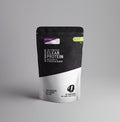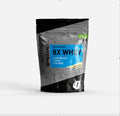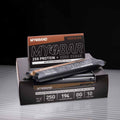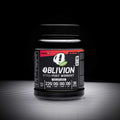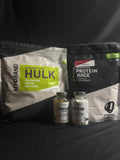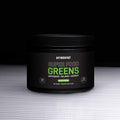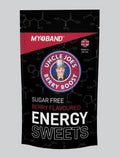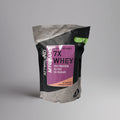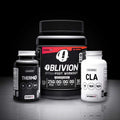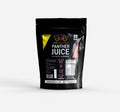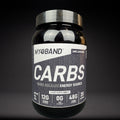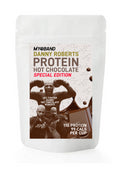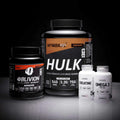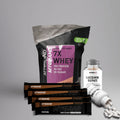These common workout myths are holding you back!
Posted by PROPROTEIN LTD ADMIN

You’re planning on hitting it hard over the next few months in order to make some massive changes. You’ve some workouts written down, you’ve planned your next food shop, and you’ve got a bunch of supplements heading your way in order to give you that extra edge. But, what if your mindset of “hitting it hard” hard, mixing it up, “confusing” your muscles, and punishing your body was all wrong? There are a handful of common training myths and misconceptions that hold back almost everyone. Here’s what you need to know and how to avoid these mistakes.
Myth #1 - You should be mixing it up and following random workouts
“Working out” is comparable to throwing a bunch of exercises together to make you feel tired. Social media is full of them, so you’d be forgiven for wanting to copy them from time to time. But, anyone can throw a workout together to make you feel tired. Exercises such as burpees and thrusters were invented for such a thing!
“Training” on the other hand is a precise process of progression. It’s meaningful and purposeful training that produces measurable results. Training does not require more effort than working out, and in fact it’s sometimes even less effort since your training efficiency is much higher.
Training is precise rather than unplanned. It’s intentional rather than haphazard. It sets you up for long-term success rather that failure by a few weeks in. Eliminate randomness and map out a plan for the next month or two, and one that you can stick with. If you can’t then get a coach, and someone that’ll hold you accountable. You’ll achieve better and more precise results in far less less time by being consistent and following a set plan.
Myth #2 - If you’re not crawling out of the gym then you’re not working hard enough
If you’re crawling out of the gym on your hands and knees, then you’re less likely to walk back in the next time. My favourite example of this is folks showing off their torn calluses from repping out some questionable pull-ups. Good luck trying to repeat that again in a few days time when your hands are still red raw!
Torn calluses you can see, but your under-recovered muscles and connective tissues you can’t. Aimlessly beating up your body all the time might give you a high and feel like you’re achieving something, but your progress will be much much slower compared to taking a smarter approach to your training (myth #1 factors into that).
You exercise because you’re trying to tell your body to do something — lose fat, gain muscle, build strength and so on. You do it because you want to achieve a specific result. That result only happens when you’ve provided your body with the right stimuli to adapt, with consistent effort over time.
Feeling tired and beaten up is nothing to do with the message you’re trying to send your body. It’s a sign that you clearly put a lot of effort in to your workout, but unfortunately it doesn’t mean that effort was directed in the right way.
You should instead understand that certain exercises will be better for you than others, and that these (well-planned) exercises are simply a “vehicle” for putting tension through your muscles. There is also a “sweet spot” as far as the volume of these exercises goes, where either too little or too much of it will give you sub-par results.
For example, generally speaking if you want to build muscle then 10-20 sets of exercise per muscle group per week is a good starting point. For most, 10 to 20 sets of chest work, say, will get you better results than just 6 sets, or beating up your chest with 30 sets — When it comes to resistance exercise in particular then sometimes “less is more”. Select the right exercises and use your training volume wisely and your efforts won’t be wasted.
Myth # 3 - you should be feeling sore the next day
DOMS (delayed onset muscle soreness) is that feeling of soreness you might experience for a day or two after a workout. Many see it as a sign of having had a good workout, and even get disappointed if they’re not in pain! This cannot be further from the truth.
Soreness is a sign that you either did something different, and that your body wasn’t used to, a specific exercise of style of workout, or that you exposed your muscles to a certain type of exercise. The most notorious of these exercises are those that have a high impact or that eccentrically load the muscle. This is often why bodyweight HIIT style workouts can often get you sore because you’re bouncing around all the time, and loading your muscles eccentrically at longer lengths for long periods of time.
DOMS is in no way a sign that you’ve had a productive workout or that you’re a step closer to achieving your goals. It’s simply a sign that you did a certain activity the day before, and a form of exercise that’s associated with muscle soreness. If it hinders your next workout, or it interferes with your home life then it’s not very productive either. To build muscle, boost strength and bulletproof your body from injury then you should chase muscle tension, and the sensation of certain muscles contracting, NOT next day muscle soreness.
Myth #4 - Training hard is all it takes
Your training sessions should not be associated with the inability to get out of bed the next day. Your training sessions should have meaning and purpose, and make you feel great afterwards. In fact, some of the most productive sessions will actually amp-up your nervous system in a way that you might even feel like you can keep training even when it’s over.
Training hard does not necessarily mean that you’re training smart. Any successful CEO will tell you that the same rules apply to business. Spend more time doing the things that work, and less time doing the things that aren’t! Keeping a training log and taking an analytical approach to things can help you with this, as does seeking the help of a coach who can identify the “low hanging fruit” for you.
Author: Gareth Sapstead
TAGS:
